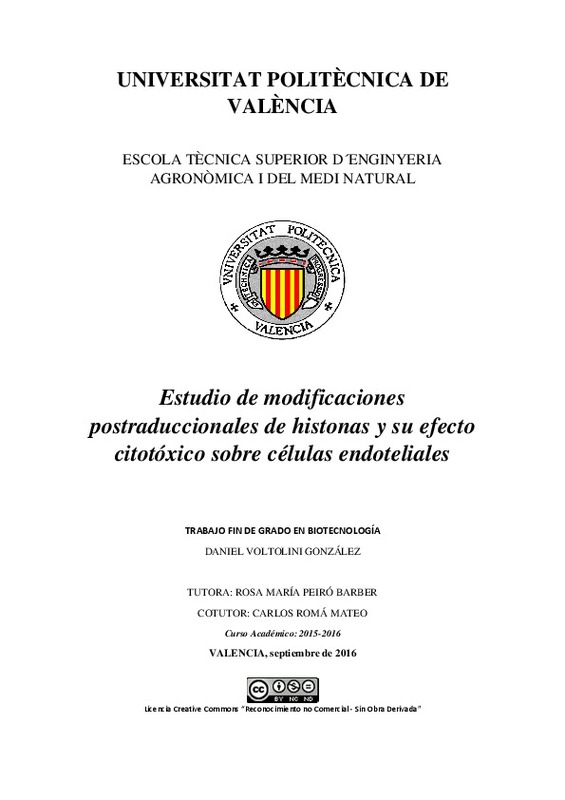|
Resumen:
|
[ES] En los últimos años se ha descrito la participación de las histonas en procesos extracelulares implicados en la inflamación. Las histonas, liberadas de forma controlada por neutrófilos, participan en la inmovilización ...[+]
[ES] En los últimos años se ha descrito la participación de las histonas en procesos extracelulares implicados en la inflamación. Las histonas, liberadas de forma controlada por neutrófilos, participan en la inmovilización y eliminación de patógenos por las células del sistema inmunológico. Además, las propias histonas presentan un efecto citotóxico mediado por mecanismos aún no esclarecidos que facilitan el proceso inflamatorio y la respuesta inmunológica. Además, la presencia de histonas produce efectos nocivos sobre las células del endotelio de los vasos sanguíneos, por lo que las histonas circulantes se han visto implicadas, por ejemplo, en procesos de sepsis. En enfermedades con carácter autoinmune como el lupus sistémico eritomatroso (LSE) se han encontrado autoanticuerpos circulantes con especificidad hacia histonas, nucleosomas y otras proteínas nucleares; sin embargo, hasta la fecha se desconoce qué tipo de modificaciones postraduccionales concretas sufren las histonas implicadas en enfermedad, más allá de una participación de histonas citrulinadas o hiperacetiladas en LSE. En el presente trabajo se analizarán los patrones de modificaciones presentes en histonas obtenidas a partir de tejidos de ratones modelo de LSE, y se testeará el efecto citotóxico específico de histonas sometidas a modificaciones similares sobre células endoteliales humanas.
[-]
[EN] Participation of histones in extracellular processes related to inflammation has been described
in recent years. Through their release in a controlled manner by neutrophils, histones take part
in the immobilization ...[+]
[EN] Participation of histones in extracellular processes related to inflammation has been described
in recent years. Through their release in a controlled manner by neutrophils, histones take part
in the immobilization and elimination of pathogens by immune cells, being key components in
the so-called neutrophil extracellular traps (NETs). Besides, histones themselves show a
cytotoxic effect induced by mechanisms not fully understood, that contributes to the
inflammatory processes and immune responses. However, the presence of histones yields at the
same time noxious effects on the endothelial cells of blood vessels, in such a way that plasma
histones have been demonstrated to be involved in pathological processes like sepsis, in which
prolonged inflammatory response occurs. Nevertheless, which kind of specific postranslational
modifications in histones are implicated in disease remains currently unknown, with the
exception of the presence of some citrullinated or hyperacetylated histones in systemic lupus
erythematosus, for instance. Postranslational modifications of histones contribute to the
modulation of gene expression either by allowing or blocking the access to chromatin for the
transcription machinery, being one of the key mechanisms underlying epigenetic regulation and,
hence, of great relevance for the study of cellular responses to specific environmental
conditions. In the present work, the modification pattern present in histones obtained from
human cell extracts will be analyzed, and a purification methodology for histones with specific
postranslational modifications will be set, in order to evaluate the differences in the cytotoxic
capability of the distinct histone types, and the diverse postranslational modifications they
might show, on human endothelial cells.
[-]
|







